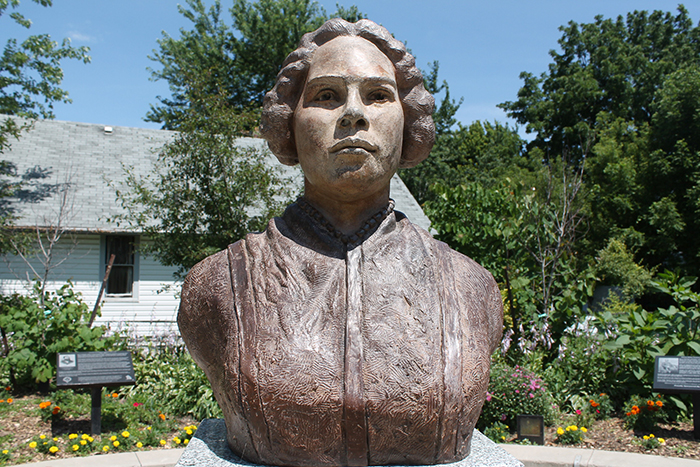
By Pam Wright
Local Journalism Initiative Reporter
Renowned abolitionist and newspaperwoman Mary Ann Shadd continues to leave her indelible mark on history.
In her honour, Canada Post has unveiled a special postage stamp carrying the likeness of the first Black woman to found and publish a newspaper in Canada.
Titled “The Provincial Freeman,” Shadd used the publication as a vehicle to fight against slavery and encourage Black immigration to Canada.
In addition to publishing and writing for the newspaper, Shadd was a public speaker, lawyer and educator, advocating for equal rights for all.
The stamp was unveiled in a special ceremony in Chatham Jan. 23 at The Kent, before a gathering of Shadd’s descendants, historians and dignitaries in honour of Black History Month in February.
Born free in 1823 to a prominent abolitionist family in Wilmington, Del. in the U.S., Shadd’s childhood home was a stop on the Underground Railroad. The experience shaped her life and she pursued the causes of equality for both women and Black people for the rest of her days.
After working as a teacher for 10 years beginning at age 16, Shadd emigrated to Canada in 1850 when the United States passed the Fugitive Slave Act which allowed slave trackers to hunt for slaves in free states. The Act also compelled governments and ordinary citizens to help trackers capture them.
That law prompted an exodus of Black people from the U.S. into Canada, where slavery had been abolished since 1833.
After moving to Canada, Shadd first taught at an integrated private school in Windsor, all the while continuing to raise her voice – and pen – against slavery, school segregation and for women’s rights.
Before she turned 30, Shadd’s message was already flowing from her pen as she advocated for justice, emphasizing the importance of independence and education.
According to the Ontario Heritage Trust, the first issue of Shadd’s newspaper, “The Provincial Freeman,” was published in Windsor from 1853 to 1855. Shadd subsequently moved to Toronto where the paper was published from 1854 to 1855 and then in Chatham for a two-year run ending in 1857.
Shadd was the first Black woman in North America to found and publish a newspaper, although she hid that fact in the beginning, including only her initials. The paper strongly promoted Canada West (Ontario) as a place for Blacks to settle, with the motto, “Self-reliance is the road to independence.”
Shadd’s connection to Chatham-Kent evolved when her father Abraham Doras Shadd, a stalwart abolitionist, moved the family to North Buxton in 1853. He became one of the first Black men to be elected to a political seat in Canada, serving as a councillor in Raleigh Township.
Canada Post also commemorated the elder Shadd with a stamp in 2009. Mary Ann and Abraham are the first father and daughter duo in history to be featured on a stamp, aside from the Royal Family.
Eventually, Shadd returned to the U.S. to become a recruiter for the Union Army. She then moved to Washington, where she was one of the first women to complete a law degree from Howard University. Shadd worked as a lawyer out of her home before she passed away in 1893.
A bust of Mary Ann Shadd is located in B.M.E. Freedom Park in Chatham, and memorials to the peerless change-maker are also located in Windsor and Toronto. An elementary school in Scarborough is named in her honour.






